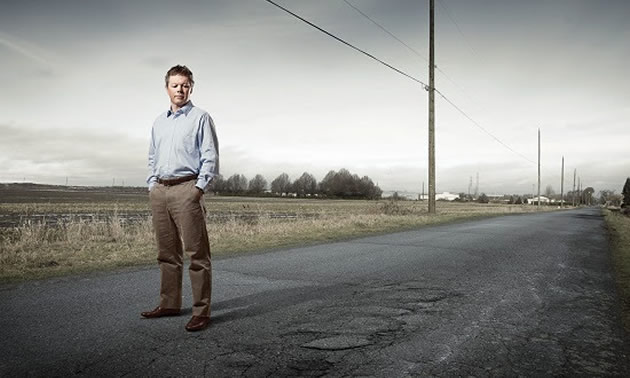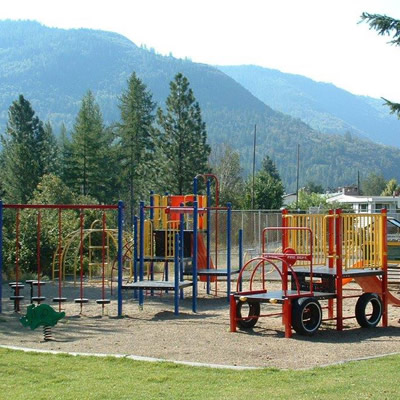Celebrating successes: Green Roads Recycling

Shane Stothert owner, Green Roads Recycling based in Fernie, B.C. — Photo courtesy KRIC newsletter.
When there’s an available technology that’s less expensive and more environmentally sustainable than traditional methods, I think we’ve got an obligation to use it.”
Shane Stothert doesn’t pull punches about the benefits of the Hot-In-Place-Asphalt-Recyling (HIPAR) technology used by his Fernie-based company, Green Roads Recycling. If you’ve ever driven on a road in BC, you’ve most likely used roads that have been recycled, in-place, using this innovative method.
Thanks to the forward-thinking approach of the Ministry of Transportation, who have stood by the use of HIPAR for more than 25 years, BC has some of the greenest roads in the country, as the only province to use HIPAR to any significant degree.
Traditional repaving involves ripping up the old asphalt, hauling it away and then bringing in new material to lay a new road. HIPAR, however, takes advantage of the high-grade aggregate and oil that already exists in the road, by reheating it and then relaying it, right on the spot.
“The best asphalt oil is already sitting in our roads,” Shane explains, “and the thing about oil is that once it’s in the road, it stays mostly intact. Oxidization only occurs at the surface level and if you treat roads before they deteriorate too far then you can almost continually re-heat and recycle the material that’s already present, which results in cost savings and a substantial reduction in greenhouse gas emissions.”
In fact, the result of not having to haul away and re-lay new asphalt saves 27 tonnes of greenhouse gas emissions for every kilometer recycled. Equally impressive is the fact that HIPAR costs 20-30% less than traditional paving methods, adding up to roughly $30,000 to $40,000 of taxpayer money saved for every kilometer. HIPAR is also less disruptive to traffic and typically results in projects being completed in 20% of the time of traditional repaving.
“There’s high residual value in the materials in our roads,” said Shane, “and British Columbia has been the original innovator and pioneer of this technology. It’s something that as a British Columbian, I’m very proud of, and I’d like to see this method used more in other provinces.”
Alberta and Saskatchewan, among others, have begun looking more at the proven HIPAR technology, but a new trend of adding “crumb rubber”, made of old tires and shingles, or recycled plastics to roads, makes it increasingly difficult to recycle into the future.
“I prefer to take the long view”, said Shane. “What happens when this stuff falls apart? How do you extend the life of these materials in the least resource-intensive and most sustainable way? We have already extracted these finite resources out the earth. They won’t grow back. They are diminishing resources. Let’s treat them as such."
HIPAR means zero waste and no landfill. It maximizes the return on our road infrastructure investment and in doing more with less, we’re saving money and the environment at the same time.
“BC is doing fantastic things with road resurfacing, and I’m proud to be part of this movement. It would be great to see other provinces, regional districts and municipalities moving in the same direction” says Shane. “Faster, greener, cheaper, cleaner. Long term sustainable. What more could you ask?”
Source: Tara Penner – KRIC newsletter





Comments